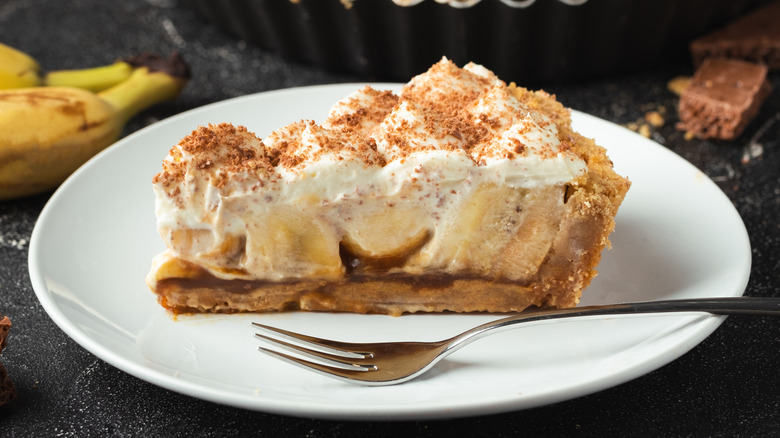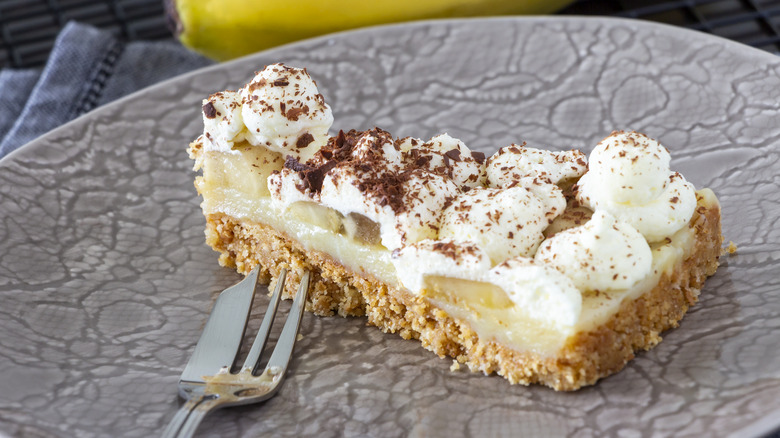What Are The Origins Of Banoffee Pie?
Food origin stories come in many varieties, from the vague ("this dish somewhat resembles something known in ancient Egypt, except for being made with completely different ingredients and cooked in an entirely different style") to the specific-yet-apocryphal (a 12-year-old TikToker claiming to have invented a recipe that's been around since their great-great-grandparents' time). On rare occasions, however, we know exactly who to credit, as is the case with recipes for dishes including Toll House cookies, cronuts, and banoffee pie. That last item, if you're not familiar with it, is a British dessert. The "pie" part is self-explanatory, while "banoffee" is a portmanteau word combining "banana" and "toffee." If it was an American invention, we might have called it "banaramel" pie, but we'll admit that the former does sound better.
Anyway, back to the backstory: Banoffee pie was invented in 1971 by a restaurateur named Nigel Mackenzie. He needed to find a new dessert for his East Sussex restaurant, The Hungry Monk. So, his chef and he started fiddling with an American recipe for a coffee-flavored pie. They decided to skip the coffee and flavor it with fruit instead, and the one that seemed to work best was banana. They originally called their creation, "Signor Banoffi's pie," but in time, the name got shortened, and the recipe itself (or variations thereof) was adopted by other restaurants and even printed on the Carnation condensed milk label. By now, the pie's such a British staple that you can even buy banoffee-flavored energy supplements.
How to DIY a banoffee pie
Despite its popularity in the U.K., banoffee pie hasn't caught on to the same extent in the U.S. If you're an American wanting to try it, your best bet may be to make it yourself. Nigel Mackenzie himself was adamantly opposed to anyone making tweaks to his original recipe, so much so that his son joked at his memorial service about the possibility of his wreaking vengeance from beyond the grave on anyone daring to make the pie with a crumb crust instead of a rolled-out one. That being said, many home bakers have dared to break this commandment, and our own banoffee pie recipe calls for a crust made from graham crackers.
As for the filling, anyone residing in the lower two-thirds of the North American continent may well recognize that "toffee" filling by another name; the boiled condensed milk that Mackenzie favored is nothing more than homemade dulce de leche. In fact, here's a hot tip: If you don't mind facing the creator's ghostly wrath, you can save yourself a lot of trouble and use store-bought dulce de leche. Pour it into the pre-baked pie crust, top it with sliced bananas, then cover the whole thing with whipped cream, and you've got yourself a banoffee — or perhaps baneche — pie. (And a potential haunting somewhere down the line, but rest assured that the restaurateur's revenant has a long list of pie bakers to get to before he can fit you into his schedule.)

